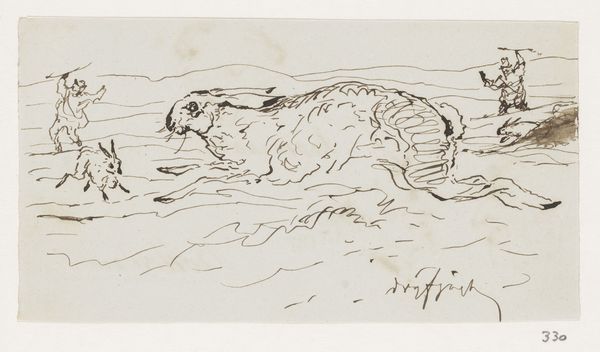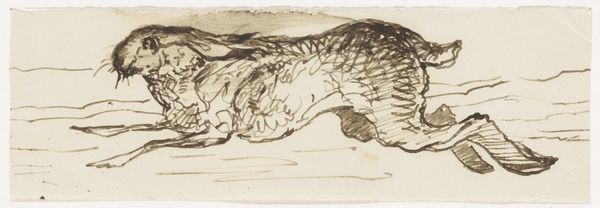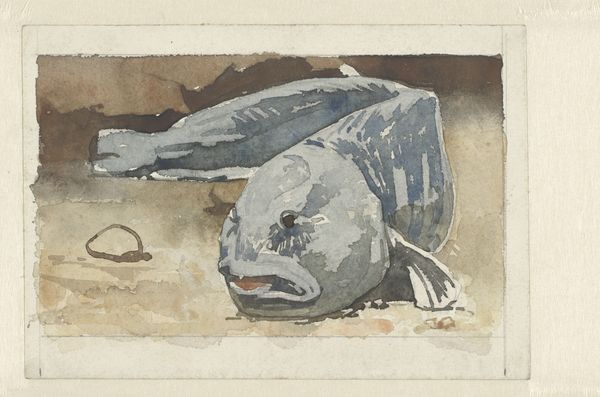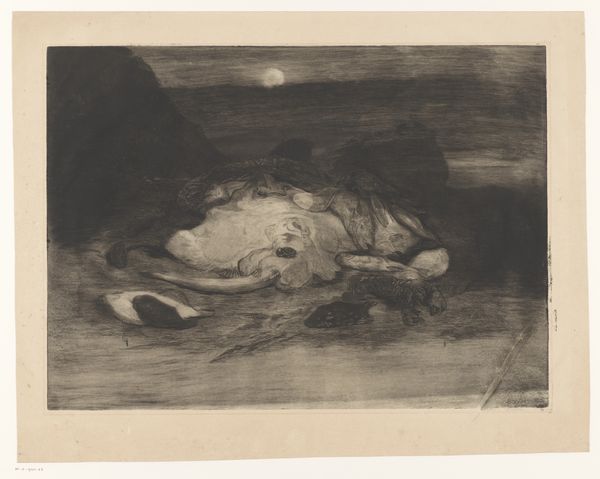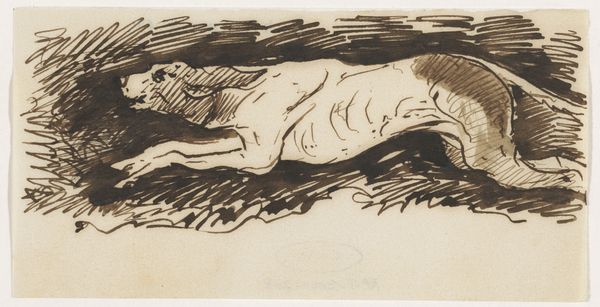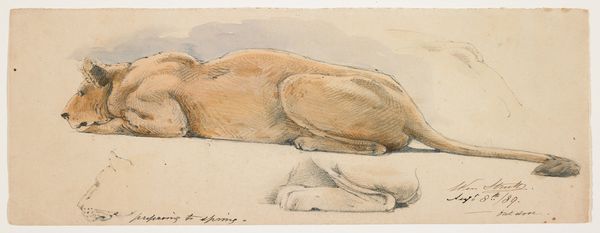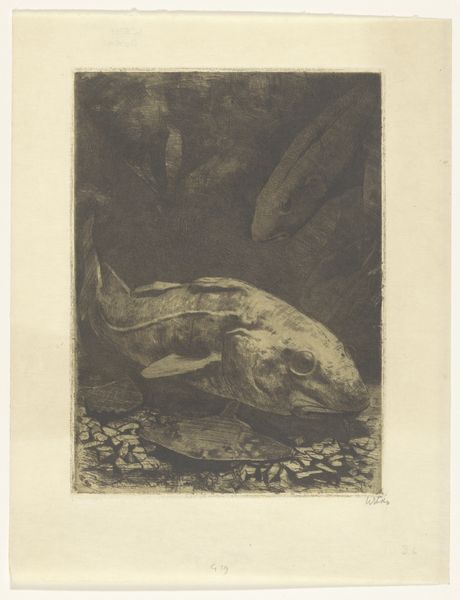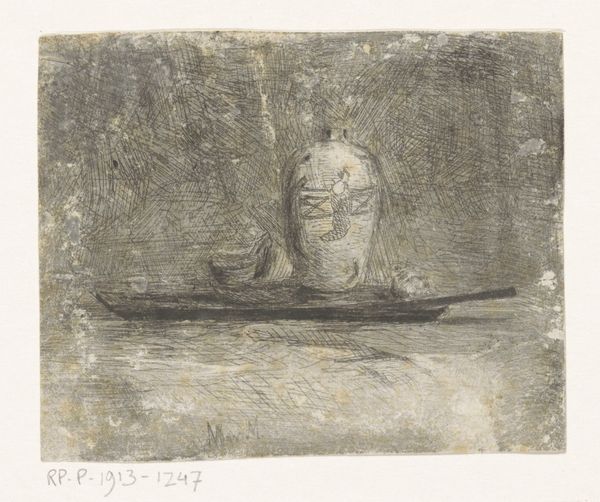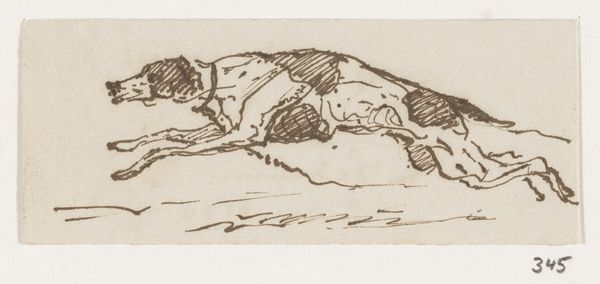
drawing, watercolor
#
drawing
#
fish
#
impressionism
#
watercolor
#
coloured pencil
#
watercolour illustration
#
watercolor
#
realism
Dimensions: height 141 mm, width 210 mm
Copyright: Rijks Museum: Open Domain
Curator: Here we have Willem Witsen’s 1883 watercolor drawing, "Side View of a Fish," currently housed in the Rijksmuseum. Editor: Well, it’s quite striking. I'm immediately drawn to the somber color palette, a very subdued range of blues and browns. The heavy use of watercolor lends a somewhat faded, melancholic mood to what should be a fairly unremarkable subject. Curator: Yes, Witsen often engaged with themes of mortality and the transient nature of life, reflecting the socio-political anxieties of the late 19th century. Fish, as a symbol, can be interpreted in various ways – representing everything from abundance and fertility to sacrifice and the inescapable cycle of life and death. The lone shell beside it underscores this sense of solitude and vulnerability. Editor: Absolutely. Structurally, the placement of the fish, almost pressed against the picture plane, removes any sense of dynamism, reinforcing that sense of stillness and decline. Note how the artist captures texture; the scales and the rough surface below are clearly visible with subtle value differences that do not draw a clear picture with bold dark lines. Curator: This work could be seen as part of a broader tradition of depicting animals, not simply as specimens, but as subjects embodying specific narratives about the human condition. One might even view it in light of emerging environmental consciousness at the time, given the rising concerns about pollution and the destruction of natural habitats. The dead animal is placed into art to allow contemplation. Editor: The very application of watercolour adds another dimension to its impact, doesn’t it? That fragile quality underscores impermanence of existence that ties the formal rendering, the colour, and even materiality all to this core interpretation. Curator: Indeed. By choosing such a fragile and fluid medium, Witsen seems to deliberately reinforce that theme. Looking at the "Side View of a Fish", understanding the historical currents intertwined in its making opens rich critical discussions for us even today. Editor: Ultimately, it is this visual experience, the immediate emotional resonance arising from his structural and chromatic choices, that lingers.
Comments
No comments
Be the first to comment and join the conversation on the ultimate creative platform.

